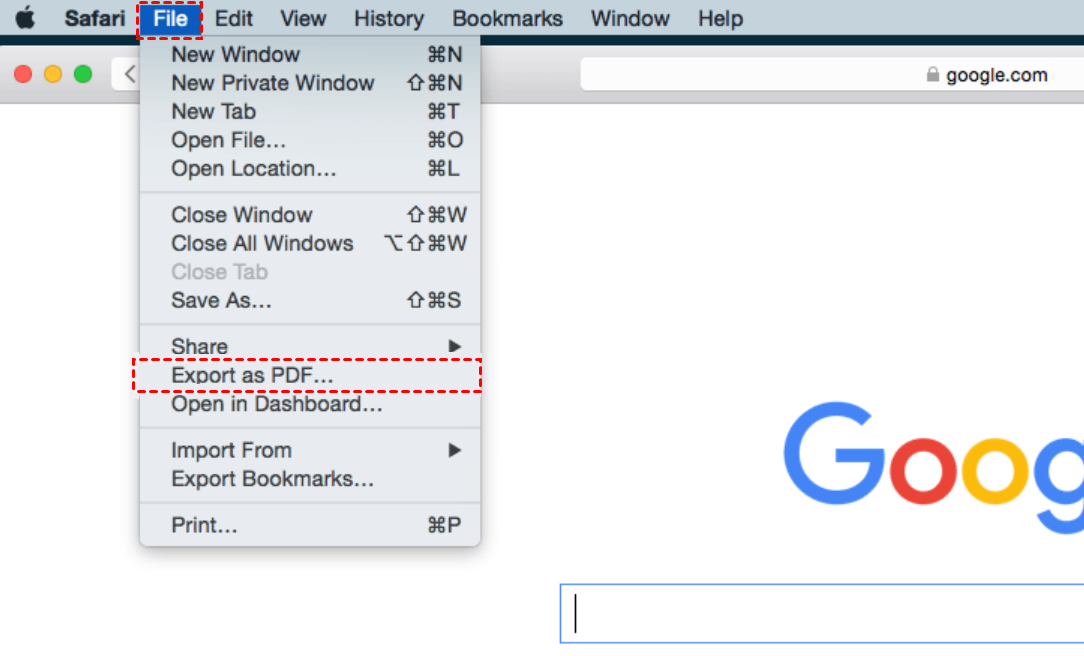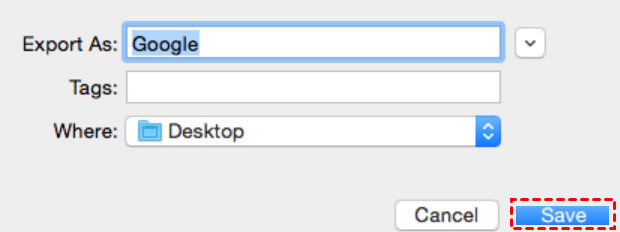Whether you're archiving important information, sharing content offline, or simply keeping records for future reference, being able to convert webpages into PDFs offers undeniable convenience. However, Safari, Apple's default web browser, presents its own set of challenges when it comes to this task. In this guide, we'll explore how to save webpage as PDF from Safari on iPad, iPhone, and Mac.

Quick Search:
Saving webpages as PDFs offers numerous benefits. Firstly, it allows you to preserve the content exactly as it appears on the web, including text, images, and formatting. This is particularly useful for reference purposes, as it ensures that the information remains intact even if the original webpage is updated or removed.
In addition, PDFs are universally compatible and can be easily shared across different devices and platforms without any loss of quality or formatting issues. How do I save an entire webpage as a PDF in Safari? In this article, we will offer you 4 simple and effective methods to deliver the goal. If you are interested, keep reading the following part.
How to save a webpage as a PDF on Safari? In this section, we will offer you 4 easy and useful solutions to save webpages as PDF files from Safari on iPad, iPhone, and Mac. Now, please refer to the content below:
If you wish to swiftly convert a Safari webpage into a PDF on your Mac/iPad/iPhone without the need for customization, follow these steps:
Step 1: Locate the webpage on your device and hit the File button in the upper left corner.
Step 2: Tap the Export as PDF… tab in the menu.

Step 3: Choose a name and a location, then click Save.

Tip: Please bear in mind that saving a webpage in this manner will provide you with an exact PDF version of the webpage, which includes all menu bars, buttons, ads, and reading suggestions. However, some formatting may slightly differ in the PDF compared to how it appears on your screen.
If you want to eliminate all the extras such as ads and other unwanted elements, locate the Reader mode icon. This action will promptly reopen the page in Reader mode, providing a cleaner and more readable layout. How do I save a PDF in Safari instead of print? Read below:
Step 1: Locate the webpage on Safari and hit the View button > Show Reader.
Step 2: After activating Reader mode, repeat the previous process: Navigate to File > Export as PDF > Save.
Note: You can save customized PDFs too. This is how:
Step 1: From Safari, go to File > Print.
Step 2: Check the pages that include the sections you want to save on the page preview.
Step 3: Under Pages, input the pages of the PDF you want to save. Select the dropdown menu to choose Save as PDF.
Step 4: Rename and choose the file destination before pressing Save.
How do I convert a web page to a PDF in Safari on iPad/iPhone? If your iPad/iPhone is running iOS 13/iPadOS 13 or later, you can follow the operations below:
Step 1: Go to the webpage you want to save as PDF on your device.
Step 2: Hit the Share icon on the bottom of the page. Then tap Options in the next window.
Step 3: Select PDF in the next window, then tap Done. Next, hit Save to Files.
Step 4: Simply select the directory where you wish to store the downloaded PDF file and tap on Save.
Note: Alternatively, you can screenshot the page too.
While Safari offers a built-in option to save webpages as PDFs, it comes with its own set of limitations. One of the primary drawbacks is the lack of customization options. Users have limited control over the layout and formatting of the resulting PDF, which can be frustrating when trying to create professional-looking documents.
Furthermore, if your local device has insufficient storage space, the PDF files can be hard to save. So, how to convert a webpage into a PDF without encountering the problems mentioned above? Here, you can utilize an extension called Save to Cloud, which is produced by MultCloud.
MultCloud is a versatile cloud management platform that offers a convenient solution to the problem of saving web pages as PDFs in Safari. It allows users to seamlessly integrate multiple cloud storage services, enabling effortless file management and sync across different platforms and devices. Its extension, Save to Cloud, can directly save webpages as PDFs.
Here’s how to use Save to Cloud to save webpages as PDFs to your cloud drives:
Step 1: Sign up for an account on MultCloud. Then sign in with your account on the web.
Step 2: Go to extension and add this tool. Next, locate the webpage you want to print, then enable Save to Cloud.
Step 3: Go to Setting and tick PDF of entire page (.pdf). If you want to save it to cloud drives, you can choose the destination under Save Webpage to Cloud.
Step 4: Back to home and Convert the page.
Step 5: Then, you can overview the process in Task.
Tips:
Anyway, you can access the MultCloud extension directly from the browser toolbar, allowing for quick and hassle-free conversion of web content into PDF format. As mentioned before, MultCloud also allows you to transfer PDF files from one cloud to another directly and seamlessly. For example, you can move files from Dropbox to Google Drive effortlessly and efficiently.
In conclusion, saving webpages as PDFs in Safari doesn't have to be a daunting task. By leveraging tools like MultCloud or exploring alternative methods such as using built-in Mac features or third-party extensions, users can overcome Safari's limitations and create high-quality PDF documents with ease.
Whether it's for archiving important information, sharing content offline, or simply maintaining a digital library, finding the right solution ensures a seamless and efficient workflow. Now, you can choose any method above. If you choose to use MultCloud's extension, the task can be achieved easily and quickly. Meanwhile, MultCloud, being a smart and reliable cloud file manager, also offers you a convenient platform to connect different cloud services.
Apart from basic features, MultCloud offers many advanced functions, including cloud-to-cloud transfer, backup, and sync. Different from downloading and uploading manually, you can migrate, sync, and back up files from one cloud to another directly and seamlessly. It provides a leading migration speed, which is efficient for large file transfers. Meanwhile, scheduled tasks are provided, so you can start tasks daily, weekly, monthly, or at a specific time.